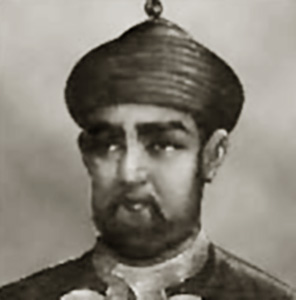 Military organisation in medieval India was quite large. Besides the Mughal and Afghan rulers, another influential and strong army of medieval India was that under the Delhi Sultanate. Ala-ud-din Khilji and Ghiyas-ud-din Balban were regarded as greatest of the Sultans for their organised military. Ala-ud-din Khilji also laid down the foundation of a large standing army which was always kept in readiness at the Imperial capital. The troops consisted of four distinct classes namely regular soldiers in the employ of the State, regular soldiers of the provincial governors, those employed in an emergency for campaigns and Muslim volunteers recruited for jihad only. Of the large standing army during the medieval rule that consisted of cavalry, infantry and elephants, the cavalry arm alone numbered 475,000, a well-equipped and maintained force.
Military organisation in medieval India was quite large. Besides the Mughal and Afghan rulers, another influential and strong army of medieval India was that under the Delhi Sultanate. Ala-ud-din Khilji and Ghiyas-ud-din Balban were regarded as greatest of the Sultans for their organised military. Ala-ud-din Khilji also laid down the foundation of a large standing army which was always kept in readiness at the Imperial capital. The troops consisted of four distinct classes namely regular soldiers in the employ of the State, regular soldiers of the provincial governors, those employed in an emergency for campaigns and Muslim volunteers recruited for jihad only. Of the large standing army during the medieval rule that consisted of cavalry, infantry and elephants, the cavalry arm alone numbered 475,000, a well-equipped and maintained force.
Ala-ud-din Khilji held occasional reviews when horses and arms were examined and he enforced new reforms with a strong hand. Many of the old grantees, however, continued to enjoy free lands as before. In the economic field he ensured that the necessaries of a soldier`s life were cheapened considerably. In the medieval era, arms and equipments mostly were manufactured under expert supervision and these were kept in a good state of repair. Horses were also systematically branded to ensure proper check at mustering-out parades. Further, new economic reforms were also introduced for improving the conditions of the military organisation.
The Tughlaqs continued to pay great attention to the defence forces. The army was kept happy and contented with the provision of many comforts. Regular soldiers were given grants of land which were sufficient for their maintenance and comfortable living. Those employed temporarily were paid direct from the Imperial treasury. A regulation provided that if a soldier became old or infirm his son, grand-son, son-in-law or even his slave was allowed to take his place. This practice was in force till recently in our army, though not in the same form, when sons or near relatives of soldiers were welcome in the same regiment and at times more than a dozen men from the same family could be found in one unit. Spoils of war were shared by the state and the soldier continued to receive the lion`s share as before. Muhammad Bin Tughlaq was the first Afghan ruler of Delhi who undertook campaigns beyond the frontiers of India. All the troops were paid in advance for a whole year. This plan was later abandoned in view of insurmountable difficulties. Firoz Shah Tughlaq, who succeeded him, maintained a large regular army and his cavalry arm. The troops maintained by the various maliks and chiefs numbered another two hundred thousand. Infantry and cavalry continued to form the main components.
The Mughal administration was fundamentally military in character. Every high official and dignitary in the state held a military appointment. The autocracy consisted of diverse elements like Turks, Persians, Tartars, Indian Muslims and some Rajputs. Later some Europeans also joined the Imperial service. With their policy of territorial expansion the Mughals kept this machinery in a state of high efficiency. The organisation was a mixture of the Indian system as tried out by the Afghans and perfected by them and some elements introduced by Akbar based on the Mughal pattern. Mughal Emperors spent a large portion of its revenues on the armed forces. The Emperor with his unlimited powers and supreme authority was also the Commander-in-Chief of the armed forces. On many an occasion he conducted the campaigns in person. The Mir bakshi or bakshi-ul-mamlik was responsible for the maintenance of all military accounts. He was also the Adjutant General and Pay Master General of the army. He kept an up-to-date list of all Mansabdars at the court and in the provinces. Recruitment of the personnel was also his responsibility. When the army prepared for a campaign he was required to make out a muster-roll of all personnel. Other officers of the military organisation were mir atash or Commander of Artillery, mir bahri or Lord of Admiralty, mir manzil or Quarter Master General and amin, darogha and mushrif in the Verification Department.




















